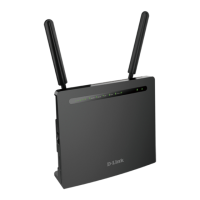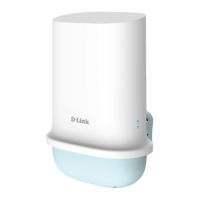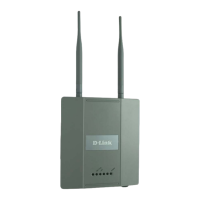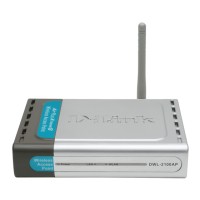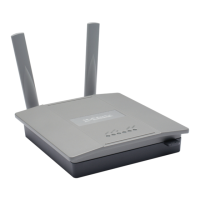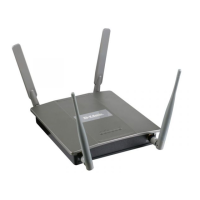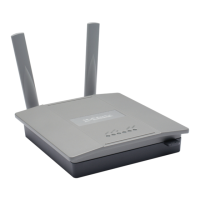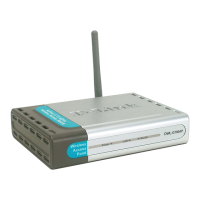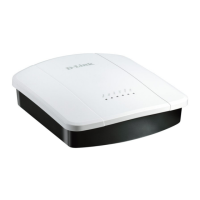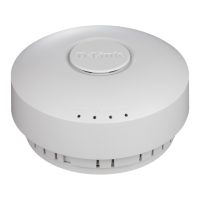D-Link Unified Access System Software User Manual
02/15/2011
Page 214 Document 34CS3000-SWUM104-D10
• The call server is physically connected to a Unified Switch, and the port the call server uses is assigned to the VLAN ID
of the VLAN Routing interface of the tunneled subnet.
• Each switch uses a loopback interface for the WLAN functions, and the loopback interface is on a different network than
the L3 tunnel subnet.
• Routing is enabled on each switch.
• Network devices have routes to the loopback and L3 tunnel subnets, and a host can ping the loopback interface and L3
tunnel interface on each switch.
• DHCP relay is enabled on each switch so that a DHCP server on the network can assign IP addresses to the wireless
clients.
• The wireless client receives an IP address in the L3 tunnel subnet and keeps that IP address throughout the roaming
session.
Some phone system require placement of a call server on the same subnet as the phones. The D-Link tunneling feature
supports this configuration.
There are a few things to consider when planning a network with L3 roaming capabilities:
• Packets that use the L3 tunnel have an extra 20 bytes in the header for encapsulation.
• To support these larger frames, you can increase the MTU size on all intermediate ports and Unified Switch ports.
• If you use tunneling only for IP telephony, or if you set the MTU size on all wireless clients that use tunneling to 1480,
you do not need to increase the MTU size in the network.
• For traffic in the L3 tunnel, the switch forwards IPv4 unicast frames in hardware; other types of traffic, such as multicast
and non-IP traffic, are forwarded in software.
- Multicast and non-IP traffic on the L3 tunneling network could cause network congestion.
- Wireless tunneling does not work if IPv6 or multicast traffic is enabled on the L3 tunnel interface.
• All devices that use the L3 tunnel network are stored in the ARP cache because the wireless subnet is local to the
switch, which means the ARP cache can fill up faster than expected.
• When tunneled clients are used in conjunction with peer switches, one of the peer switches must be configured as a
default gateway for the tunneled clients. Normally the default gateway routes all traffic from the client’s subnet to other
subnets, however in a peer switch network the Unified Switch that manages the AP to which the client is associated
routes the frames into the remote subnets. This means that each peer switch must have routing table entries that
enable it to route frames to every subnet in the network.
Using a Loopback Interface for the Wireless Functions
By creating a loopback interface, you can control which routing interface the wireless function uses for its IP address when
multiple routing interfaces exist. With the loopback interface, the IP address of the wireless function is always the same.
You must create static routes so other devices can find the loopback interface.
The advantage of defining a loopback interface is that the interface never goes down. The disadvantage is that network
configuration is more complex because the loopback interface is located on its own subnet and the rest of the network must
know how to get to the subnet.
Caution! APs, peer Unified Switches, and other routers must not be connected to the tunneling routing interface.
Note: In this context, the loopback interface does not refer to the loopback interface with the 127.0.0.1 IP address.
When you configure a loopback interface for the wireless interface on the switch, it is essentially a permanent
logical interface and cannot have an IP address of 127.0.0.1. You must create a dedicated subnet for the loopback
interface, and other devices on the network must be able to contact the IP address of the loopback interface.

